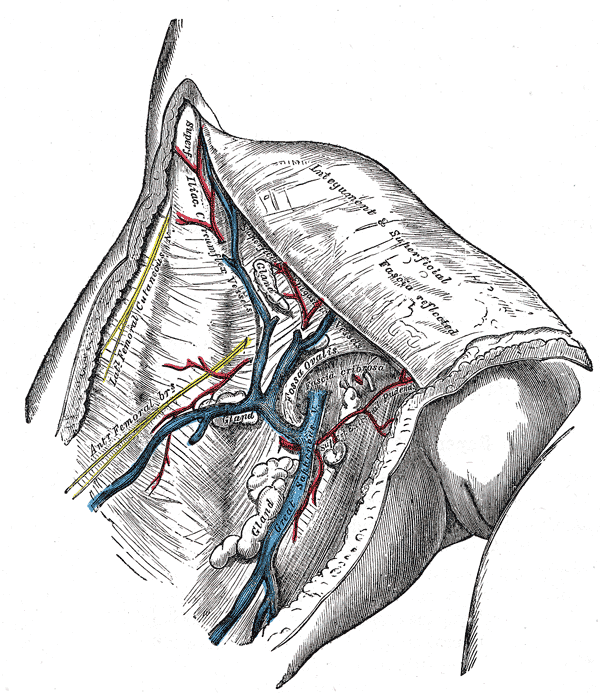[1]
Tomaszewski KA, Popieluszko P, Henry BM, Roy J, Sanna B, Kijek MR, Walocha JA. The surgical anatomy of the lateral femoral cutaneous nerve in the inguinal region: a meta-analysis. Hernia : the journal of hernias and abdominal wall surgery. 2016 Oct:20(5):649-57. doi: 10.1007/s10029-016-1493-7. Epub 2016 Apr 26
[PubMed PMID: 27115766]
Level 1 (high-level) evidence
[2]
Carai A, Fenu G, Sechi E, Crotti FM, Montella A. Anatomical variability of the lateral femoral cutaneous nerve: findings from a surgical series. Clinical anatomy (New York, N.Y.). 2009 Apr:22(3):365-70. doi: 10.1002/ca.20766. Epub
[PubMed PMID: 19173255]
[3]
Dibenedetto LM, Lei Q, Gilroy AM, Hermey DC, Marks SC Jr, Page DW. Variations in the inferior pelvic pathway of the lateral femoral cutaneous nerve: implications for laparoscopic hernia repair. Clinical anatomy (New York, N.Y.). 1996:9(4):232-6
[PubMed PMID: 8793216]
[4]
Kosiyatrakul A, Nuansalee N, Luenam S, Koonchornboon T, Prachaporn S. The anatomical variation of the lateral femoral cutaneous nerve in relation to the anterior superior iliac spine and the iliac crest. Musculoskeletal surgery. 2010 May:94(1):17-20. doi: 10.1007/s12306-010-0054-y. Epub 2010 Feb 5
[PubMed PMID: 20135245]
[5]
Ozaki Y, Baba T, Homma Y, Tanabe H, Ochi H, Bannno S, Watari T, Kaneko K. Preoperative ultrasound to identify distribution of the lateral femoral cutaneous nerve in total hip arthroplasty using the direct anterior approach. SICOT-J. 2018:4():42. doi: 10.1051/sicotj/2018037. Epub 2018 Sep 17
[PubMed PMID: 30222102]
[6]
Weng WC, Wei YC, Huang WY, Chien YY, Peng TI, Wu CL. Risk factor analysis for meralgia paresthetica: A hospital-based study in Taiwan. Journal of clinical neuroscience : official journal of the Neurosurgical Society of Australasia. 2017 Sep:43():192-195. doi: 10.1016/j.jocn.2017.04.024. Epub 2017 May 13
[PubMed PMID: 28511974]
[7]
Schwaiger K, Panzenbeck P, Purschke M, Russe E, Kaplan R, Heinrich K, Mandal P, Wechselberger G. Surgical decompression of the lateral femoral cutaneous nerve (LFCN) for Meralgia paresthetica treatment: Experimental or state of the art? A single-center outcome analysis. Medicine. 2018 Aug:97(33):e11914. doi: 10.1097/MD.0000000000011914. Epub
[PubMed PMID: 30113491]

